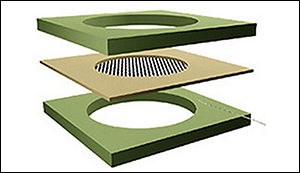Graphene-Based Microphone Could Let You Hear Like a Bat
8. 7. 2015 | IEEE Spectrum | spectrum.ieee.org
As a species, humans have evolved to have certain strengths and weaknesses. While we don’t have the sonar-like range finding capabilities of bats or dolphins, we do have the brains to engineer a device that can give that capability to us.
Researchers at the University of California, Berkeley have done exactly that in their development of tiny ultrasonic microphones made from graphene. The research, which was published in the journal Proceedings of the National Academy of Sciences, uses graphene in the place of paper or plastic in the diaphragm of a microphone. In combination with the graphene-based microphone, the Berkeley researchers created an ultrasonic radio that can be used for wireless communication.

At only one atom in thickness, graphene possesses the key properties of strength, stiffness, and light weight; so it is extremely sensitive to a wide-range of frequencies. In this case, the microphone can pick up frequencies from across the human hearing range -from subsonic (below 20 hertz) to ultrasonic (above 20 kilohertz)—and as high as 500 kHz. (A bat hears in the 9 kHz to 200 kHz range.) To prove the effectiveness of their graphene-based microphone, researchers used it to successfully record the sounds of bats.
Read more at IEEE Spectrum
Image Credit: UC Berkeley
-jk-




